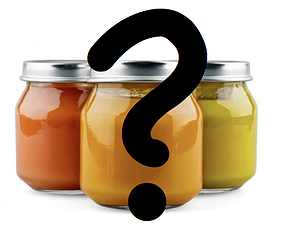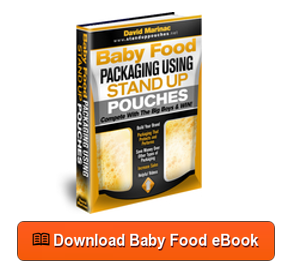Consumers don't give much thought to packaging-well, at least not as long as it does what it's supposed to do. When it doesn't, however, you've got a customer satisfaction issue, or should we say, a "lack of customer satisfaction" issue. Baby food packaging provides a perfect illustration to show you what we mean. For decades now, glass jars have been the packaging of choice for many types of baby food regardless of brand, probably because (at least in part) consumers are comfortable with them. That doesn't mean, however, that there isn't a better packaging choice available. Such as? Well, such as flexible protective packaging, which may actually be the best baby food packaging on the market, especially when compared to glass jars.

As we've already mentioned, consumers really do care about packaging and may actually base their purchasing decisions, at least in part, on the quality of your packaging choice. Safety is, of course, a concern, likely the primary concern about packaging for food products (especially baby food products). Glass jars certainly keep bad things out and good things in, but there's that whole "glass" thing. Drop a glass jar, and rather than safety, you have a safety problem.
Flexible protective packaging, on the other hand, avoids this problem altogether. Available as stand up pouches, spouted stand up bags and flat barrier bags, this type of packaging is made from multiple layers of scientifically-formulated, FDA approved and food grade film that is laminated together. The resulting barrier protects contents from vapor, odor, moisture, UV light and air (if necessary), and pests (ALWAYS necessary). The protective properties of the barrier also seal in freshness, flavor, and nutrition, thereby extending the "best by" date of your product line (which is, by the way, another significant contributing factor in building customer satisfaction). Of course, drop baby food packaging like a stand up pouch and the only thing you need to do is bend over to pick it up.
Another reason a flexible protective packaging solution might be suitable for your brand is because of the convenience involved which is, unsurprisingly, still another customer satisfaction hot button. Sure, glass jars are small and the twist off lid that most have is convenient. But jars aren't the tidiest of containers and, again, there's that whole safety issue of carrying around glass containers in a diaper bag, purse, or backpack. Flexible protective packaging, on the other hand, is, as the description suggests, "flexible", making it easy for the consumer to take it on the go. In addition, because it's strong, durable, and puncture-resistant, there's no worry about the type of leakage or spillage that can occur when a glass jar lid hasn't been properly closed. A choice of zip lock closure or a pour spout/resealable cap combination (for liquids) make the flexible packaging option even more convenient to use.
There are other standards by which packaging can be measured. One is how well it markets your brand. Flexible baby food packaging offers several different ways to brand your brand, so to speak. They include:
- The choice of clear plastic, Mylar metalized film, or foil for each barrier
- The ability to have a clear "window" inserted into an opaque panel
- Sufficient surface area on which to affix product labels or other stickers
- Round and sombrero-shaped hang holes are also available, both of which provide grocers a second product display option
- The ability to combine some or all of these features.
There is another substantial, albeit somewhat less obvious, factor you might wish to consider in determining the best type of packaging: The environment. Sure, glass jar packaging may be recyclable, but it does not possess some of the eco-friendly characteristics of flexible protective packaging. For example, although consisting of multiple film layers, some styles require less material than most other plastic alternatives (up to 15 percent less). And less material generates two results that benefit the environment:
- Less waste upon disposal. Flexible packaging, when empty, usually takes up no more space in a landfill than would an empty shipping envelope.
- Less energy consumption per unit during shipping because of the reduced weight of each individual package.
Choosing the right baby food packaging for your particular application is more complex than many realize. As always consult with your packaging professional for guidance and direction so your product is protected and it flies off of store shelves!






